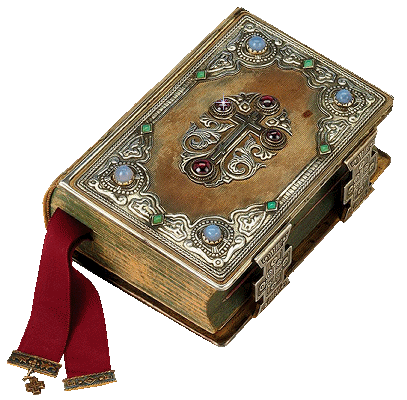 |
Orthodox Outlet for Dogmatic Enquiries | Digital Books |
|---|
UNIA: The Face and the Disguise
2. “Unia”
When we say “Unia” we mean a religious-political formation that was fabricated by the Papacy for the Westernizing of the non-Latin East; its spiritual-political subjugation to the authority of the Pope. In other words, it is directly related to the Papacy’s expansionist policy; it is the most consistent expression of European feudalism which continues to our day, through the State of the Vatican. Of course one needs to make a certain distinction between the various phases that the question of “Unia” presents historically. Because, precedent to the specific historical method was the idea and the plan involving the subjugation of the East – and indeed of the Orthodox – to the Pope; a permanent tendency of the Latin “Church” following its differentiation and its secession from the Orthodox East. Wherever Latinization proves difficult to impose directly, the Papacy implements the method of Unia, proving this to be a shrewd fabrication inasmuch as subjugation can be achieved, on the pretext of continuance and freedom.
This expansionist move by the Papal throne known as UNIA owes its name to the Latin word UNIO (=union), however it was only in 1596 in Poland that it officially obtained the name of UNIA (UNIJA in Slavic). The term was used at the time, not only to denote the move for unification with the Pope, but also the specific corpus (community) of the Orthodox who had synodically decided on their accession to the Papacy: not a full accession, but only in their recognition of the Pope as their spiritual head, otherwise preserving their worship rites and remaining customs so that “externally” they would give the impression of continuing and remaining in their national cadre.
The Uniates’ retention of the “eastern” or “Byzantine” “rite” explains the various titles such as “Byzantine-rite”, “Hellenic-rite”, “Hellenic-Catholic” e.a., with which they are usually characterized (in Greece). But the name that best corresponds to the facts is “Catholics of the East”, given that Uniates are in essence Papists, who have accepted the Papist teaching overall (and in fact, the very dogmas that radically differentiate Papism from Orthodoxy) and who only externally and superficially - with the attire of their clergymen and their eastern customs (“rites”) – give the false impression that they have remained Orthodox. This is also why they have correctly been named “United Roman Catholics” and “Unionates” (in Latin: UNITI/Uniates).
____________
Article published in English on: 21-11-2008.
Last Update: 4-11-2014.